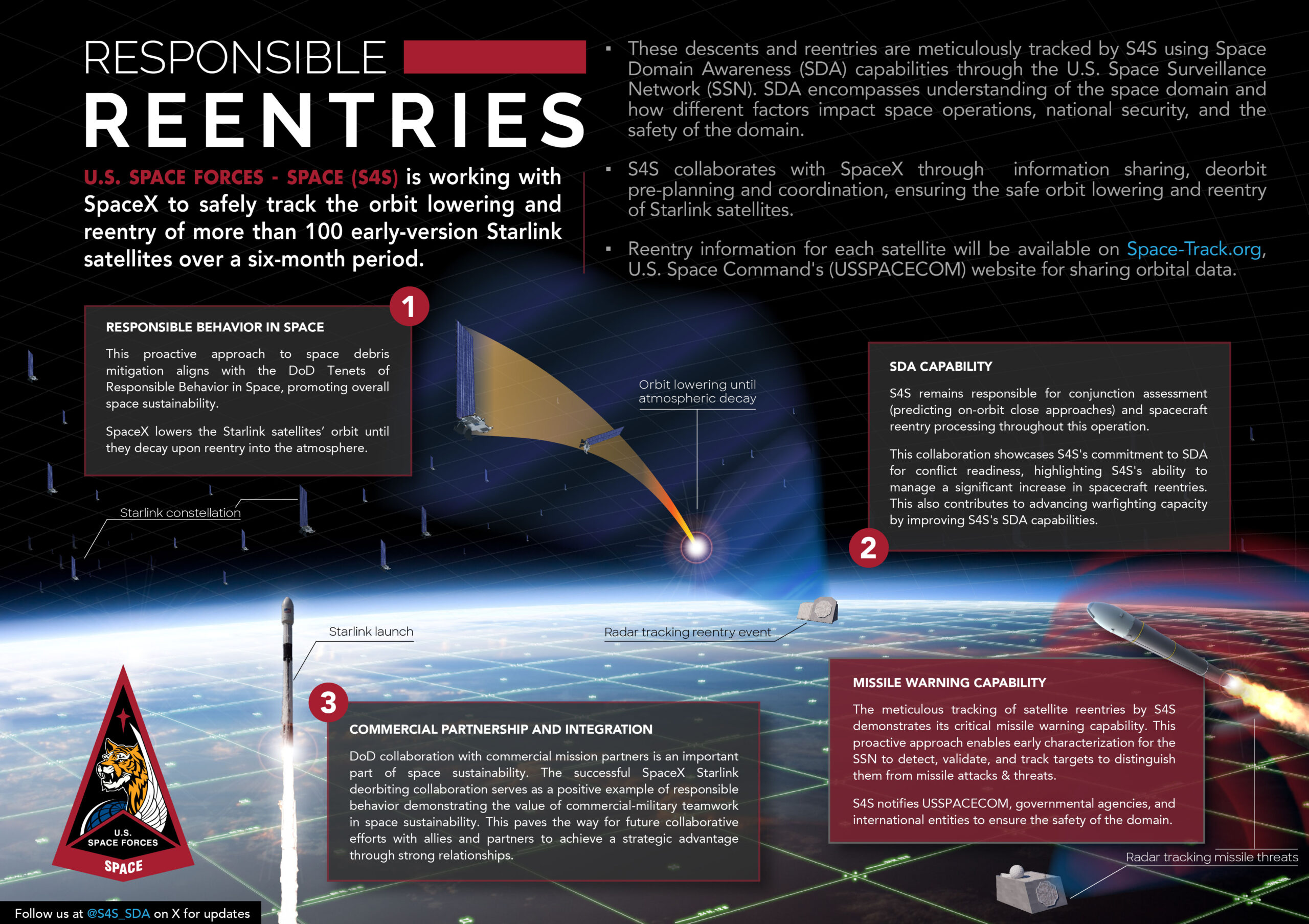WASHINGTON — U.S. Space Command on June 28 sent out a reminder that it will closely monitor the controlled deorbiting of approximately 100 Starlink satellites, an operation that SpaceX announced in February.
The decision to deorbit these early version 1 Starlink satellites came after SpaceX identified a potential issue that could increase the risk of future failures. The operation, projected to last several months, involves a controlled descent of satellites from low Earth orbit.
With a massive constellation of about 6,000 satellites and counting, SpaceX routinely deorbits spacecraft at the end of their operational life. However, the deorbiting of 100 satellites at once is a larger-than-usual operation.
To keep the public informed, U.S. Space Command said that reentry information for each satellite will be available on Space-Track.org, a public catalog used to track orbital objects and prevent potential collisions.
Space Force units under U.S. Space Command are working with SpaceX to “safely track the orbit lowering and reentry of Starlink satellites,” the command said in a news release.
Satellites designed to burn up on reentry
This tracking effort comes against a backdrop of increasing worry about the risks posed by the rapid expansion of satellite constellations in low Earth orbit. A controversial Federal Aviation Administration (FAA) report to Congress last year warned that by 2035, falling debris from U.S.-licensed constellations in low Earth orbit could potentially injure or kill someone every two years if deployments continue as planned.
SpaceX strongly contested these findings, calling the FAA report a “deeply flawed analysis” based on outdated studies and questionable assumptions. The company maintains that its satellites are designed to completely burn up upon reentry, posing minimal risk to people on the ground.
Related
Read the original article here
